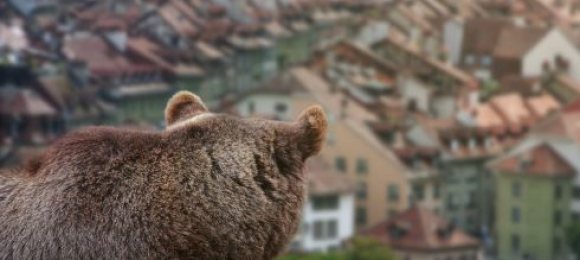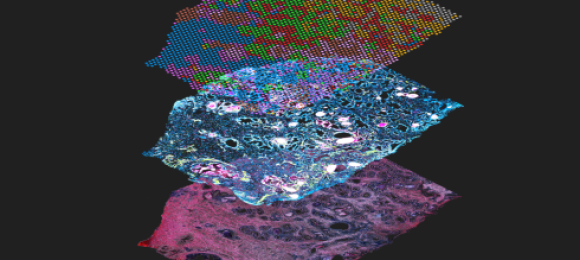Stress in the city
September 11th 2023
The new field of urban endocrinology is exploring how animals use hormones to adapt to life in city environments, writes Sachin Rawat
On a spring afternoon in 2021, Carl, an infamous coyote at San Francisco’s Golden Gate Park, was walking past oblivious picnic-goers. His eyes were fixed on something and he had a prowling gait. The subject of Carl’s interest was a small child sitting with his father. With teeth bared he lunged for the boy. Luckily, in the nick of time, the kid’s father picked him up and averted a tragedy.
Carl the coyote was known for seeming to have no inhibitions around humans. Videos show the alpha male nonchalantly strolling and stalking people in the large, busy park. Had Carl become desensitised to the sights and sounds that would normally cause a coyote to scurry off to the safety of a den? Or was his behaviour a response to raised stress hormones from life in the city? Whatever the answer, the latest nerve-shredding encounter was the final straw for city officials. After being designated a public safety threat, Carl was shot dead by US Department of Agriculture agents1.
Nobody wants encounters like this, but as our urban spaces expand into wild areas and animals are tempted into the city by abundant food waste, they are becoming more frequent. Artificial light, all-night noise and other random disturbances make living in the city unpredictable and stressful even for us, the species that created these environments. In the wild, fast-moving things, such as predators, are often threats, but that isn’t always true for cities. If a bird nesting on a tree were to react to every car that passed by, it would have little energy and time for anything else. Urban animals must adapt to changing conditions quickly, including learning what to ignore.
Hormones mediate changes in physiology and behaviour in response to environmental triggers to enable animals to adapt to city life. A better understanding of the interplay between hormones and adaptive behaviours could be vital to improving the lives of animals in cities and preventing future human–urban wildlife conflict.
Starting with birds
The new but growing field of urban endocrinology investigates how hormones affect animal responses to different stresses in the cities. Most urban endocrinology research has so far been limited to studies of birds, often comparing hormone levels between urban and non-urban populations of the same species. This is because birds are easy to trap with mist nests and their blood can be sampled quickly to measure hormone levels.
Frances Bonier, a behavioural ecologist at Queen’s University, says “hormones regulate changes in vigilance behaviour and parental behaviour, things that are important to how well an animal does in any given environment”. Studies indicate that the hypothalamic-pituitary-adrenal (HPA) axis plays a crucial role in how hormone levels adapt to urban stresses. The axis involves complex, bidirectional feedback between the hypothalamus region of the brain and pituitary and adrenal glands, and attunes hormone levels.
For example, the HPA axis affects the secretion of glucocorticoids, hormones that activate the systemic stress response. Continual exposure to different stresses means that these hormones would be produced throughout the day, which, in turn, negatively impacts physical and reproductive health. Think of the bird reacting to every passing vehicle.
Whereas some studies show reduced production of glucocorticoids in urban populations, other studies show no significant difference in glucocorticoid production in urban and non-urban populations2. While it is unknown why that is the case, the answer probably lies in the complexity of glucocorticoid function.
For instance, glucocorticoids are also responsible for the breakdown of carbohydrates, fats and proteins. The urban environment presents new food sources for animals: overflowing waste, increased foraging times due to artificial light and, often, people feeding them. Species that are able to capitalise on these new food sources thrive better in cities. While studies look at physiological and behavioural adaptations that allow some birds to exploit these opportunities, there is little work on pinning down the endocrine mechanisms behind these adaptations.
Bird’s ability to mediate their hormone response to stress seems critical to their success in urban environments
The few studies that do try to look at the endocrine mechanisms have so far yielded no universal truths. “With every hormone that has been measured, comparing urban individuals to non-urban individuals within a species, we haven’t found any consistent patterns,” Bonier adds.
Endocrinology is further complicated by the fact that there is no single baseline for any hormone that can be applied to any individual at any given time. “Not only is there day and night fluctuation, but these hormones will also fluctuate during breeding seasons, migration or different developmental stages,” says Valentina Alaasam, a postdoctoral researcher at the University of Nevada.
Although biologists are yet to understand the detail, being able to mediate hormone levels throughout the year in response to triggers seems critical to birds’ survival in the city. This is why, in contrast to the popular perception of cities as being inhospitable to wildlife, many birds are found at greater densities than in the wild. Studying hormones in a wider range of animals could get us closer to resolving this paradox.
Urban adaptation in other animals
Some urban ecologists are now looking at urban adaptation and its endocrine basis in other animals such as salamanders, squirrels and raccoons. However, unlike with birds, they cannot sample hormones from small mammals or other animals as often, as they are generally fewer or harder to catch. Even when they do trap these animals, the delay between the capture and sampling can be long enough to cause significant stress, altering baseline hormone levels.
However, these animals offer unique experimental constraints that don’t apply to birds. Busy highways in and around cities restrict animal movement, creating sandboxes to study urban evolution.
“Mammals, except for bats, aren’t able to fly away,” says Christopher Schell, an urban ecologist at UC Berkeley. “So wherever their home range or territory is, they are a good signal of what disturbances are being experienced in that area.”
There’s also the anthropocentric benefit to studying them. Small mammals are more closely related to humans than birds. Therefore, any knowledge gained from studying the former group would apply better to understanding how humans cope with urban stresses.
Schell, who studies raccoons and coyotes, said that fur is an accessible source of monitoring hormones in these animals. “They tend to shed right around late June to early August and then they’re just growing their [fur] until the next summer,” he says. “If we’re able to capture an animal in February and then shave it, we can get six months of that animal’s overall stress profile related to where it’s travelling in its environment.”
Ecologists need repeated measurements to eliminate any confounding factors in their studies. Urban ecologists who study small mammals, however, often find it difficult to sample enough individuals to achieve the statistical power required to make meaningful conclusions. This problem is further aggravated by the fact that a species may be severely fragmented within cities.
Just like with birds, there are no generalisable conclusions yet. One study suggests that urban squirrels, compared with their rural counterparts, eat more anthropogenic foods, are heavier and have reduced stress responses3. Raccoons eat anthropogenic food too, but they have high glucocorticoid content, indicating high stress levels, as well as high blood sugar content.
Could part of the difference be due to the relationship they share with humans? People are comfortable feeding squirrels out of their hands, but are more hostile towards raccoons. This illustrates how a species’ response to stress itself may depend on a host of external factors. Even for the same individual or species, things may look very different in different parts of the city. “You can have changes in diet, disturbance regimes, human activity and even the composition of other animals that they interact with,” Schell says.
Urban adaptation on a spectrum
Even within the same species, different populations or individuals vary widely in how successfully they adapt to life in the city. However, adapting is not always the same as thriving. “Just because an animal is able to live in a city doesn’t necessarily mean it’s doing that great. It’s probably having to compensate for those adjustments it’s making to live there in other ways,” says Alaasam. Animals that live in cities often show signs of dampened or supressed stress response
Conversely, she adds: “Just because we see a lot of hormonal changes in an animal in a city, it doesn’t necessarily mean it’s doing badly.”
Then there is the challenge of endocrine plasticity: the variation in the ability of individuals of a species to adjust their hormone levels that probably explains much of the variation in success in cities4. “To really compare hormone levels among species, we would need endocrine phenotypes that have been characterised in the same context and look at how they change in response to context.”
Testing the role of endocrine plasticity behind success in urban requirements would require creative experiments. If urban avoiders and urban adapters are put together in a simulated urban environment, do they respond in different ways? Bonier suspects that they probably do.
High-throughput omics can present a window into endocrine plasticity. At the level of genes and proteins, omics technologies can reveal the complete diversity of adaptive changes. At the level of gene expression, Alaasam says, scientists see a lot of changes that they aren’t sure what to make of. It’s possible that there are different kinds of responses at different levels of biological organisation.
However, researchers can already see that, like most things in biology, adaptation lies on a spectrum. This requires a shift from classifying urban animals as avoiders, exploiters or adapters to acknowledging that adaptation is gradual.
It’s not simply changes in hormone levels that matter, but the physiological impact of those changes. “Understanding at what point those changes [in hormone levels] are going to cause harm is really important,” Alaasam says. “We definitely are just scratching the surface.”
Further work needs to look into how animal hormones are impacted by the interplay of all potential external factors. Ecologists also realise the need to move from simply correlative or comparative studies to causative studies. In simpler terms, this means looking at the mechanism of how hormones impact adaptation, instead of looking at hormone levels in response to stress or comparing hormones in different populations.
Sachin Rawat is a freelance science and tech writer based in Bangalore. He holds a master’s degree in biotechnology.
References
1) ‘Carl was shot dead. The killing could lead to a coyote population boom in San Francisco’. San Francisco Chronicle, 4 Oct 2022.
2) Deviche, P. et al. Past and future: Urbanization and the avian endocrine system. Gen. Comp. Endocrinol. 332, 114159 (2023).
3) Lyons, J. et al. Fat and happy in the city: Eastern chipmunks in urban environments. Behav. Ecol. 28(6) 1464–1471 (2017).
4) Bonier, F. Future directions in urban endocrinology: The effects of endocrine plasticity on urban tolerance. Mol. Cell. Endocrinol. 565, 111886 (2023).









